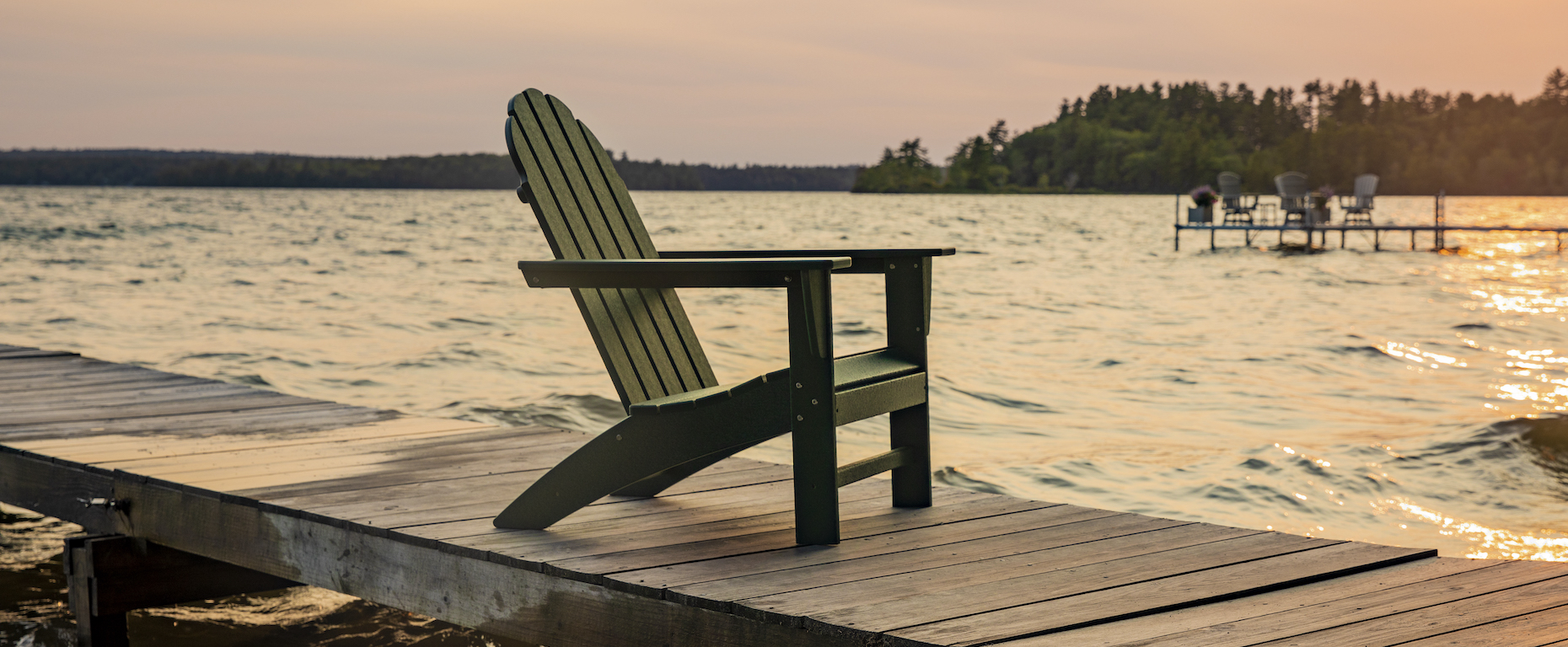FREE delivery in the contiguous US!

The location and amenities of a lake house make it the ideal getaway for relaxing weekends, family get-togethers, and summer vacations. If you recently bought a lake house or have owned one for a while, you’ll want to prepare it for upcoming visits and busy seasons.
A lake house will experience more intense weather than a home in the city since it’s adjacent to the lakeshore. Snow, ice, rain, sun, wind, and wildlife can take a toll on everything from the home’s roof and siding to the dock and outdoor furniture in just a few months. We know a thing or two about outdoor furniture, so we can help you find styles that weather lakeside conditions without skipping a beat.
What’s the Climate Like Around a Lake?

Featured: Vineyard Adirondack Chair and South Beach 18" Side Table in Sunset Red and Navy
The climate around a lake can vary, as lake homes are located throughout the country. In general, areas near mountains and forests will experience frequent rainfall and Northern regions see severe winters with subfreezing temperatures. Lake houses also contend with dirt, mold, and fading due to their proximity to the shore as well as direct and water-reflected sunlight.
Take the time to research specific weather and climate information in your home’s area. As you shop for outdoor furniture, prioritize water and fade resistance, durability, minimal cleaning, and easy upkeep.
How Different Materials Fare in Lakeside Environments
Outdoor furniture at your lake house is directly exposed to the elements. When comparing furniture options, consider the following questions:
- How long will each material last?
- How often do you want to treat or clean your furniture?
- Which materials best resist water, mold, sun, and grime damage?

FAQs
What should every lake house have?

Featured: Round 48" Fire Pit Table in White and Palm Coast Adirondack in Navy
For the best guest experience, every lake house should have the following outdoor and water accessories:
- Weather- and water-proof outdoor furniture
- Patio umbrellas
- Life vests and water wings
- Inflatable rafts and foam swim noodles
- Goggles, swim flippers, and snorkels
- Fishing gear
- Canoes, kayaks, or paddleboards (with oars)
- Plenty of towels
- Outdoor lighting for stairs, walkways, and piers
- Fire pit table
- Charcoal, gas, or propane grill
What is the best color for the exterior of a lake house?

Featured: Farmhouse 37" x 72" Dining Table, Farmhouse Trestle 65" Bench, and Braxton Dining Arm Chair in Green
The best color palette for the exterior of a lake house is one that matches the water and surrounding nature. Pulling earthy browns and cool shades of blue, grey, and green from the lake and landscape will blanket your home in a calming aesthetic.
How to decorate a lake house on a budget?
Use the following tips to decorate your lake house without breaking your budget:
- Shop at thrift stores to find pre-loved decor.
- Create your own decor using items from around your property, such as driftwood, shells, boat oars, and wave-tumbled stones.
- A fresh coat of water- and mold-resistant exterior paint on your home, decking, and outdoor decor is a quick, relatively inexpensive update.
